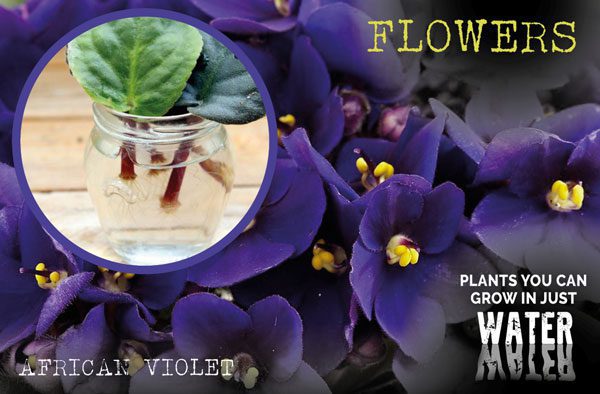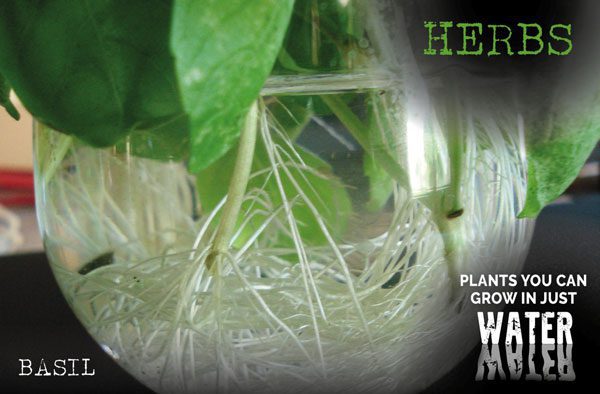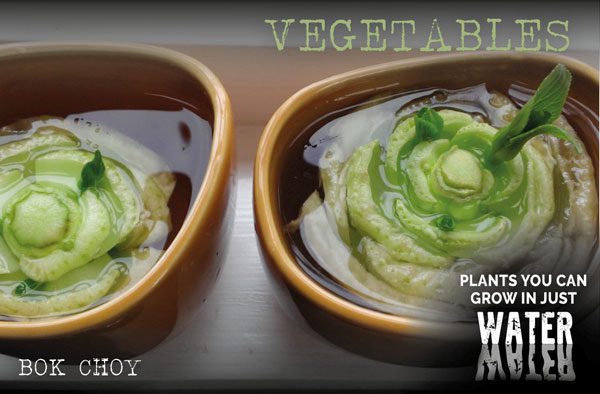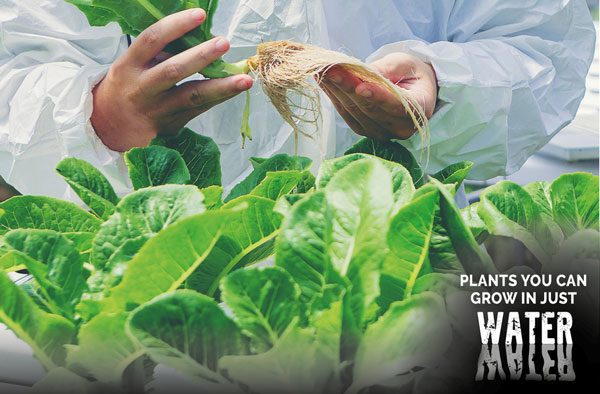Do you have a container and some water? Great. You now have pretty much all you need to start growing some plants in your home. What about the dirt, you ask? Well, for the plants I am going to tell you about, the soil isn’t needed! It may take a little longer than using old fashioned dirt, but your water gardens will last and remain healthy for quite a while.
Getting Started
Fill your container about ¾ of the way with water. Now what? With hydroponic/water garden planting like this, using clippings from existing plants is the best way to get started. I know it may sound like a bit of “chicken and the egg” situation – you want to grow a plant, but you have to have the plant to grow it.
However, one plant you already have can now become multiple water plants. Or, you can go and buy your favorite plant and then make your own. You might have a friend who would be willing to snip off a piece of one of their plants to give to you. The options are many, as are the different plants you can grow.
What Can You Grow In Water?
FLOWERS

Impatiens, Begonias, Wandering Jew, and African Violet are all excellent options for your water gardening. How about some Lucky Bamboo? With the bamboo, you will need a few stones, marbles, and pebbles in the bottom of the jar to keep it from falling over. Most plants being replanted in water require a part of the stem, but when it comes to Begonias, all you need is a single leaf!
HERBS

Herbs that you can grow in water are the perennial ones. These are meant to keep coming back year after year, so as long as you pick off the older leaves as they grow, you should get a nice steady flow of herbs in your container.
Perennial herbs include Basil, Sage, Mint, Thyme, and Oregano. If you are already growing these herbs in your garden, then this is a great way to keep the herb love going throughout the winter months.
Many grocery stores sell herb plants that will provide you with the necessary starter. Clip off a good 6 inches of the stem (cut on a diagonal to allow the plant to get the most water possible), clear the leaves from the bottom 4 inches or so, and away you go.
VEGGIES

Yes, that’s right, it isn’t just flowers and herbs that can grow in a container of water. You can grow food as well. As with the flowers and the herbs, these are regrown veggies, meaning you are using the actual vegetable to grow more of them.
- Bok Choy: Just cut off the bottom of the stalk and place it in a shallow bowl of water. Within a week, you should have more bok choy!
- Celery: Pretty much the same as with the Bok Choy. Take a celery bundle and cut off the bottom couple inches (the part you never really eat anyway). Put it in water and wait. It takes longer to grow a full stalk, but it will grow right out of the center.
- Green Onion: You know that white part of the green onion with the roots coming off it? Well, take that and put it in a glass of water and watch the green section regrow. Use as needed, and it should keep regrowing.
- Lettuce: Just as you did with the bok choy and the celery – cut off the bottom part (that usually just gets thrown away) and put it in a small bowl of water. Watch new leaves regrow from the center.
Final Tips

I know I said all you need is a container and water, and that’s true. But there are a few things to consider.
Using opaque glass containers will help avoid issues with algae growth. I think a clear glass container, and being able to see the roots, is more visually appealing. It just means having to change the water more frequently.
One extra ingredient (besides the container and the water) are water/gel beads. While not necessary, they do allow for the plant’s roots to get more oxygen. If you do notice root issues, then those beads could be the solution.
Also, some people recommend using water-soluble fertilizer; many people will tell you it isn’t necessary. However, should you choose to use one, then make sure you don’t use a metal (brass, lead, etc.) container, as the fertilizer could cause it to corrode.